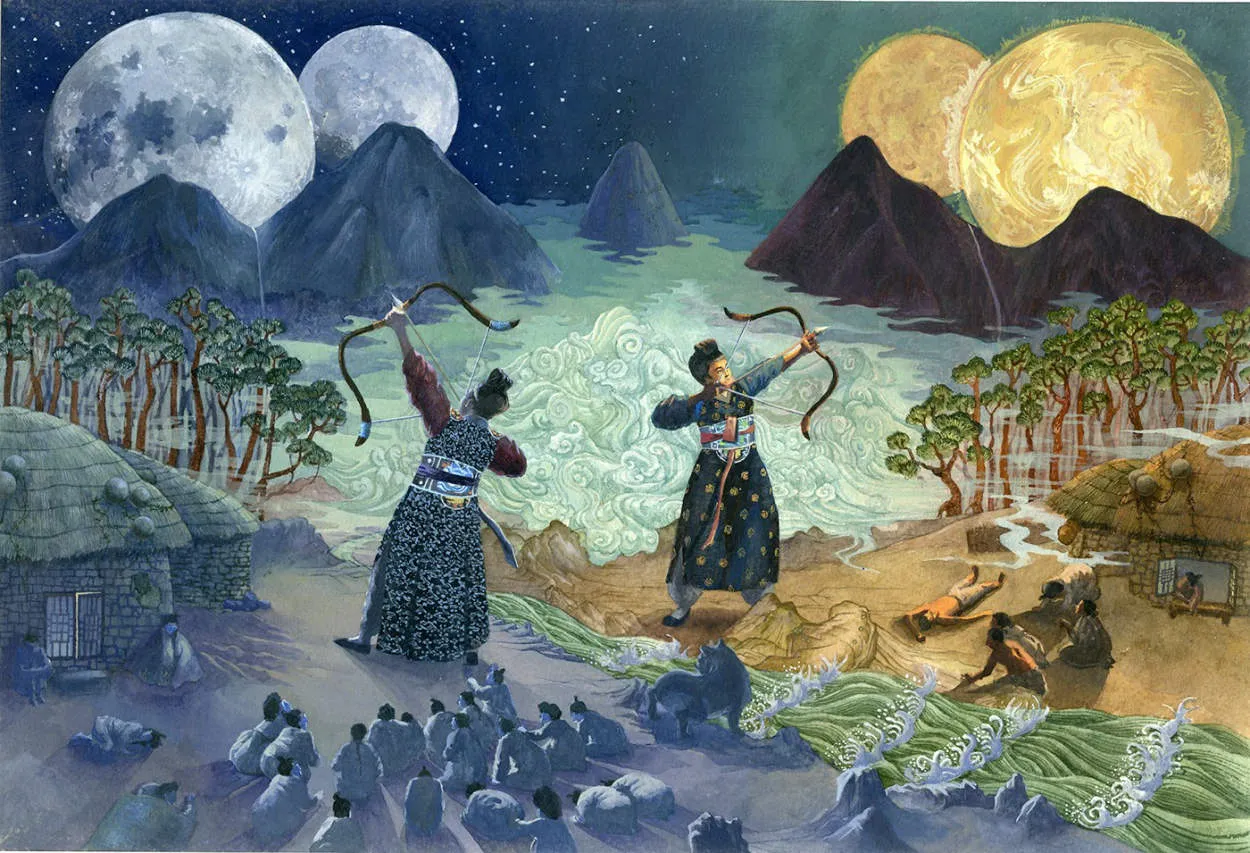Delve into the enchanting world of Korean folklore and mythology as we explore the captivating legends and tales that have been passed down through generations. From mythical creatures to epic heroes, this article unveils the rich cultural heritage and imaginative storytelling of Korea.
The Origins of Korean Folklore
Korean folklore has a rich history deeply rooted in Korean culture. The origins of Korean folklore can be traced back to ancient times when oral traditions were predominant. These folktales and myths were passed down from one generation to another, serving as a moral and educational tool for the Korean people.
One of the earliest influences on Korean folklore is Shamanism, a religious practice that holds mythical and animistic beliefs. Shamanism heavily influenced the creation of supernatural creatures and spirits that are often featured in Korean folklore. These mythical beings, such as the dokkaebi (goblin) and the nine-tailed fox, continue to be popular characters in Korean tales.
Another significant influence on Korean folklore is Confucianism. This philosophy emphasized moral values, filial piety, and virtue. Many Korean folktales reflect these teachings by illustrating the rewards of good deeds and the consequences of selfishness or greed.
In addition, the geographical features and nature of Korea have also played a role in shaping its folklore. The mountains, rivers, and seas have been regarded as sacred in Korean culture, and they often serve as the backdrop for many folktales. For instance, the legend of “The Fairy and the Woodcutter” takes place in a deep forest, demonstrating the connection between humans and nature.
Korean folklore has evolved throughout history, incorporating elements from various cultural and religious influences. These tales have not only entertained people but have also provided valuable lessons and insights into Korean society and values. Today, Korean folklore continues to be cherished, retold, and celebrated as an essential part of Korean heritage.
Popular Characters in Korean Mythology
In the rich and captivating world of Korean folklore and mythology, numerous characters have emerged as beloved icons. These mythical beings reflect the traditions, beliefs, and cultural heritage of Korea. Let’s explore some of the most popular characters in Korean mythology:
1. Hwanung
Hwanung, also known as the “Prince of Heaven,” is a significant deity in Korean mythology. According to legend, he descended from heaven to bestow the blessings of civilization upon humans. Hwanung established the ancient Korean kingdom of Gojoseon and is considered the father of Dangun, the legendary founder of Korea.
2. Dokkaebi
Dokkaebi, often described as a mischievous goblin, holds a prominent role in Korean folklore. These supernatural creatures possess magical powers and are known for their playful nature. Dokkaebi are commonly depicted as tricksters who love to play pranks on humans but can also be kind-hearted and helpful.
3. Haechi
Haechi is a mythical creature resembling a lion with a horn on its head. Known for its loyalty and righteousness, Haechi symbolizes justice and protects the people from evil. In Seoul, statues of Haechi can be seen guarding important landmarks, signifying the city’s strong connection to its mythical past.
4. Gumiho
Gumiho, often translated as “nine-tailed fox,” is a legendary creature that appears in many Korean folktales. These mystical foxes possess the power of shape-shifting and are usually depicted as beautiful women who seduce men to consume their life force. Gumiho stories explore themes of desire, love, and the consequences of crossing boundaries.
5. Bongcheon Ghost
The Bongcheon Ghost, also known as the “Gwisin,” is a famous urban legend in Korean mythology. The ghost is said to haunt the Bongcheon neighborhood in Seoul and has gained popularity through a popular webcomic. This chilling tale has captivated many and represents the enduring fascination with supernatural beings in Korean culture.
These are just a few examples of the captivating characters found in Korean mythology. Exploring their stories and legends allows us to delve into the fascinating world of Korean folklore and gain insight into the cultural heritage of this vibrant nation.
Common Themes in Korean Folktales
Korean folklore is rich with a diverse array of myths, legends, and tales that have been passed down through generations. These stories often showcase various common themes that reflect the values, beliefs, and cultural heritage of the Korean people.
1. Supernatural Beings
In Korean folktales, supernatural beings play a significant role. Creatures like dragons, goblins, fairies, and spirits are commonly featured, portraying their interactions with humans. These beings are often used to convey moral lessons and teach virtues such as kindness, bravery, and honesty.
2. Transformation and Shape-shifting
Transformation and shape-shifting are recurring motifs in Korean folktales. Characters often change forms to test others or deceive them. This theme emphasizes the unpredictable nature of life and the importance of seeing beyond appearances.
3. Triumph of Good over Evil
Korean folktales frequently portray the triumph of good over evil. Heroes and heroines face challenging situations and demonstrate virtues such as courage, perseverance, and wisdom. These stories inspire readers to stand up against injustice and believe in the power of goodness.
4. Love and Sacrifice
Love and sacrifice are prominent themes in Korean folklore. Many stories revolve around selfless acts of love and devotion, often between family members or lovers. These tales highlight the importance of putting others before oneself and the enduring power of love.
5. Nature and Harmony
Korean folktales often celebrate the beauty of nature and emphasize harmony between humans and the natural world. Animals and natural elements are personified and hold essential roles in these stories. They impart lessons about the necessity of coexistence and sustainable living.
These common themes illustrate the depth and richness of Korean folktales. They serve not only as entertainment but also as a reflection of the Korean cultural identity, values, and traditions passed on through generations.
Conclusion
Korean folklore and mythology is a rich and captivating aspect of Korean culture. Through its tales, legends, and mythical creatures, it offers a unique and fascinating glimpse into the beliefs and traditions of the Korean people. These stories continue to be cherished and passed down through generations, contributing to the cultural heritage of Korea.




